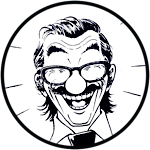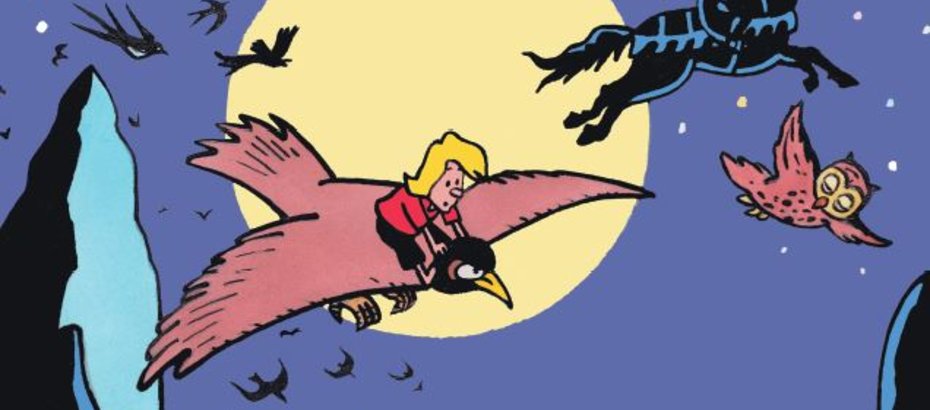In 1979 and 1980 the Stripcentrum Karel Driesen, aka SDK, released a series of postcards including work by Franquin, Willy Vandersteen, Marc Sleen and also Bob De Moor. The postcards nowadays fetches up to 35 Euros, depending on the comic author featured, nevertheless they are not that widely known, at least not to the big public.

Today’s card, ‘Salon van de Vlaamse Humor’, dates from 1980 and is according to the information on the card the first one in the 3rd series. The title of the cartoon can be translated as ‘Salon of the Flemish Humor’ and shows 5 artists with the central figure being the Flemish artist Pieter Bruegel the Elder (who also has the biggest artwork exhibited). The 4 others have names which are related to comics or humour: D. Gag, J. Verstrip, M. Kartoen and Vandermoppen (Dutch for what could be D. Gag, J. Comics, M. Cartoon and Joker in English).

The painting which Pieter Bruegel the Elder is standing for is called ‘De Vlaamse Spreekwoorden’, Dutch for ‘The Flemish Proverbs’ and actually exists. Known under the name The Blue Cloak or The Topsy Turvy World, the 1559 oil painting depicts a scene in which humans and, to a lesser extent, animals and objects, offer literal illustrations of Dutch language proverbs and idioms.
With the cartoon you might think that Bob De Moor wanted to show that today’s artists still have a lot to learn from Bruegel’s inspirational work. This is also suggested by the rather minimal artwork which is presented behind the 4 other artists and which is rather poor compared to the splendid painting by Bruegel.
The style reminds of the styles used in this, this and this drawing which all date from the 60s, thus it’s far from sure that it actually dates from 1980 like the back of the card seems to imply, instead we think it also dates from the late 60s. If anyone has some extra info on this drawing, let us know!


